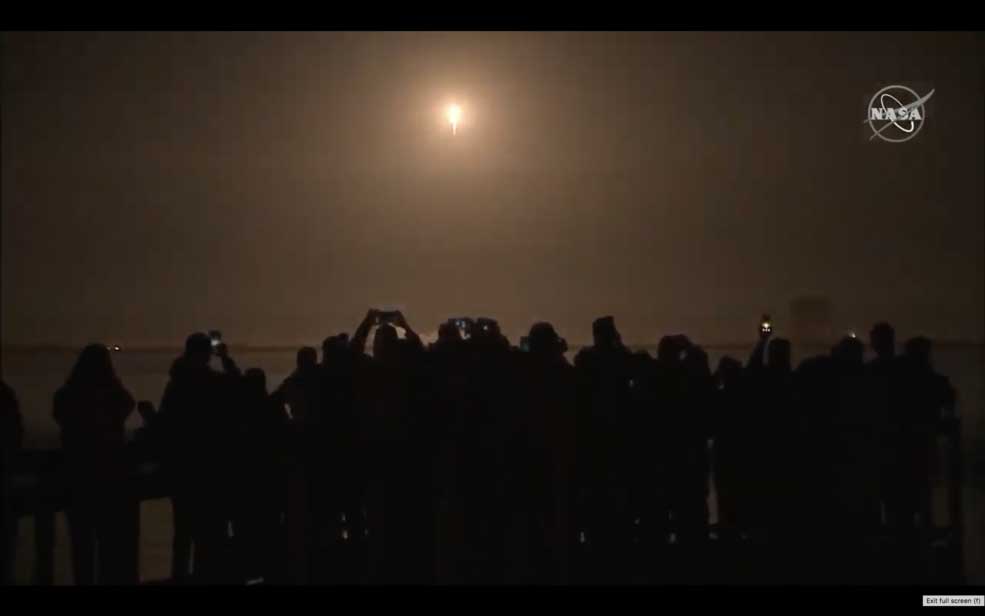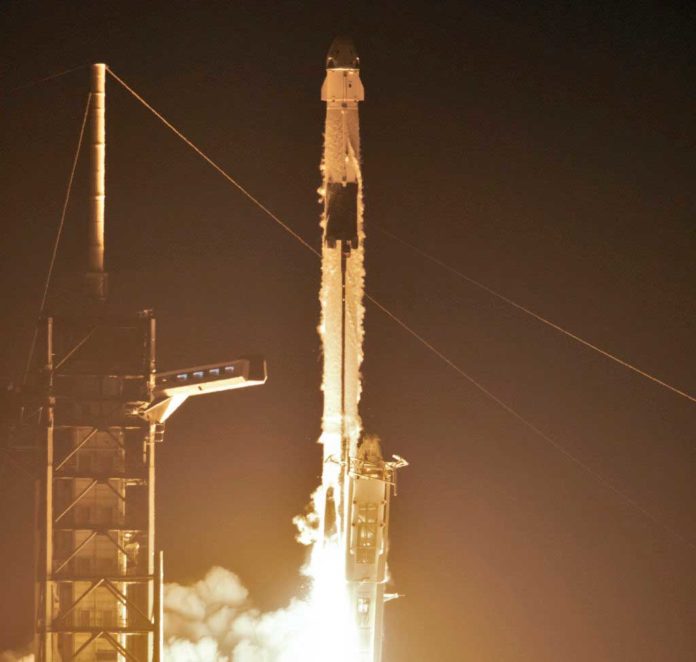For the first time in history, a commercially-built and operated American crew spacecraft and the rocket is underway to the International Space Station, following the successful launch Saturday morning of the company’s Falcon 9 rocket and Crew Dragon spacecraft. The rocket lifted off at 2:49 a.m. EST Saturday from Launch Complex 39A (LC-39A) which has been greatly modified to accommodate their rocket’s and spacecraft’s unique requirements and operations.
This is first of its kind of mission aimed to demonstrate full capabilities of the spacecraft and its systems. Known as Demo-1, the spacecraft is the first flight test of a space system designed for humans built and operated by a commercial company through a public-private partnership.
Demo-1 also helps the nation by bringing one-step closer to the return of human launches to the space station from the United States for the first time since 2011.
NASA Administrator Jim Bridenstine said, “This successful launch marks a new chapter in American excellence, getting us closer to once again flying American astronauts on American rockets from American soil. I proudly congratulate the SpaceX and NASA teams for this major milestone in our nation’s space history. This first launch of a space system designed for humans, and built and operated by a commercial company through a public-private partnership, is a revolutionary step on our path to get humans to the Moon, Mars and beyond.”

Credits: NASA
Elon Musk, CEO and lead designer at SpaceX said, “First a note of appreciation to the SpaceX team. It has been 17 years to get to this point, 2002 to now, and an incredible amount of hard work and sacrifice from a lot of people that got us to this point…I’d also like to express great appreciation for NASA. SpaceX would not be here without NASA, without the incredible work that was done before SpaceX even started and without the support after SpaceX did start.”
“Though, We’re only partway through the mission, but the system thus far has passed an exhaustive set of reviews, and the launch itself. The launch went as expected and so far everything is nominal.”
The Crew Dragon is carrying 400 pounds of supplies and equipment. It will gather the important data through its Ripley, an anthropomorphic test device outfitted with sensors. It can tell about what an astronaut flying aboard the spacecraft would experience throughout the mission.
For operational missions, will be able to launch as many as four crew members and carry more than 220 pounds of cargo, enabling the expansion of the crew members, increasing the time dedicated to research in the unique microgravity environment.
The Crew Dragon is designed to stay docked to station for up to 210 days, although the Crew Dragon used for this flight test will not have that capability. This spacecraft will remain docked to the space station only five days, departing Friday, March 8. After undocking from the station, Crew Dragon will begin its descent to Earth.
